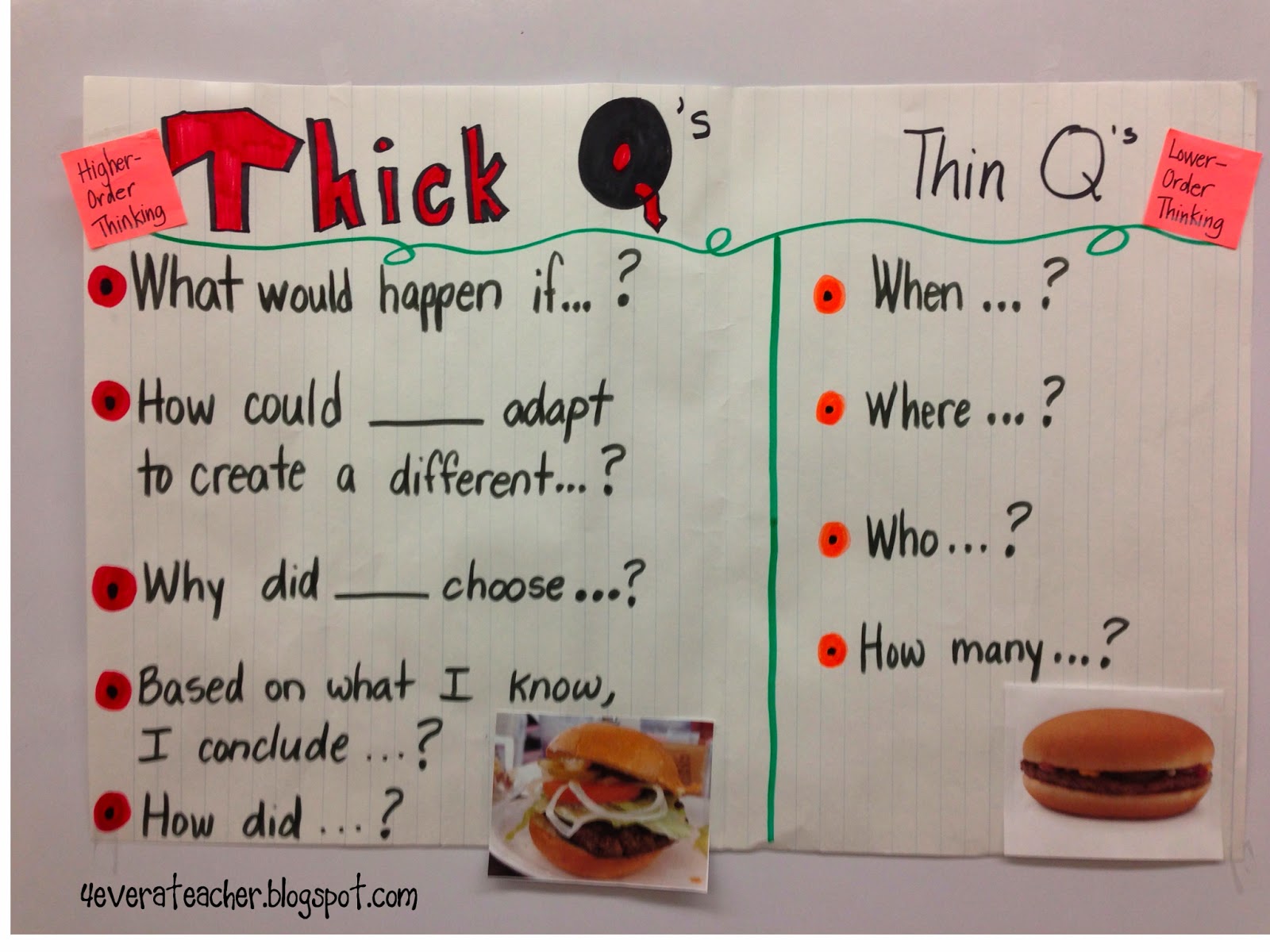Thick And Thin Questions
Welcome to our in-depth exploration of the fascinating world of questions! Today we’re diving into a topic that is critical for anyone looking to enhance their reading comprehension, critical thinking, and communication skills: understanding the difference between thick and thin questions. Whether you’re a teacher, student, researcher, or just a curious mind, this distinction is crucial for deeper understanding and more meaningful interactions.
What Are Thick Questions?
Thick questions are open-ended inquiries that cannot be answered with a simple “yes” or “no”. They require thought, insight, and often more than a single sentence to address adequately. Thick questions promote critical thinking and discussion, often leading to additional questions or exploring new avenues of thought.

Credit: www.pinterest.com
What Are Thin Questions?
In contrast, thin questions are those that can be answered with a short, specific response—often factual and sometimes with a simple “yes” or “no”. They are straightforward and generally require recall of straightforward information without deep analysis or opinion.
Examples of Thick and Thin Questions
| Thick Questions | Thin Questions |
|---|---|
| What are the potential effects of climate change on global agriculture? | Is climate change a current global issue? |
| How did the character’s actions reflect the cultural norms of that time period? | What is the name of the main character in the story? |
| What might be the long-term impacts of social media on communication? | Which platform is considered the largest social media network? |
Benefits of Thick and Thin Questions
Both thick and thin questions have their place in learning and conversation. Here are some benefits of each:
- Thick Questions:
- Encourage deeper thinking and comprehension.
- Promote discussion and exchange of ideas.
- Help participants consider multiple perspectives.
- Stimulate curiosity and further inquiry.
- Thin Questions:
- Check for factual understanding and recall.
- Can be used to build a foundation of knowledge.
- Quickly assess basic comprehension.
- Provide clarity and specificity to particular points.
Using Thick and Thin Questions in Education
In educational settings, effectively combining thick and thin questions can greatly enhance students’ learning experiences. Thin questions can serve as building blocks for establishing a solid foundation of facts, while thick questions can be used to expand upon that knowledge and promote higher-order thinking. Here are some tips for educators:
- Start with thin questions to assess baseline understanding.
- Progress to thick questions to encourage analysis and synthesis.
- Foster an atmosphere where students feel comfortable asking both types of questions.
- Model how to think critically and ask meaningful questions.
- Use thick questions to connect concepts across different subjects or real-world contexts.
Frequently Asked Questions For What Are Thick And Thin Questions?
What Defines A Thick Question?
A thick question is open-ended, promotes discussion, and typically does not have a straightforward answer, often requiring analysis or opinion.
Why Are Thin Questions Important?
Thin questions are important for clarifying details and eliciting factual or specific information quickly and efficiently.
How Do Thick Questions Improve Learning?
Thick questions enhance learning by encouraging critical thinking, fostering deeper understanding, and promoting exploration beyond basic facts.
Can Thin Questions Spark Debate?
While thin questions usually seek concrete answers, they can occasionally lead to debate if the topic is controversial or open to interpretation.
Conclusion
In conclusion, recognizing the difference between thick and thin questions is an essential skill for anyone seeking to engage with content on a deeper level or facilitate more enriching conversations. By tactically using both types of questions, we can navigate complex topics with greater ease, draw out comprehensive and nuanced responses, and encourage a culture of curiosity and lifelong learning.
As we become more conscious of our inquiries and develop the habit of contemplating the nature of our questions, we enhance our ability to comprehend and communicate effectively, both in academic circles and in our everyday lives. So the next time you’re in a discussion or studying a subject, remember to consider whether you’re asking thick or thin questions—and aim to strike a balance that leads to clarity, depth, and engagement.
